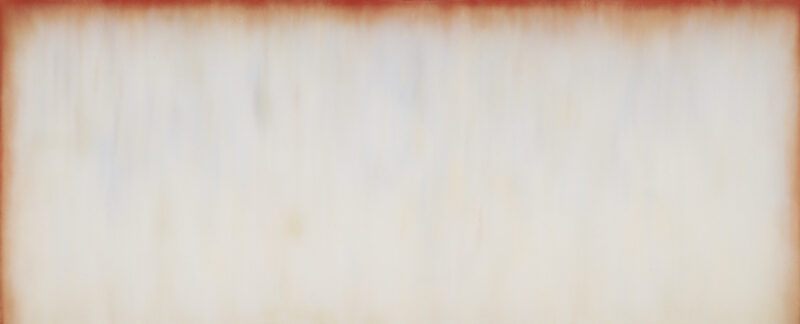
HINDOL
Bhavsar, Natvar Prahladji
1978
Artwork Information
-
Title:
HINDOL
-
Artist:
Bhavsar, Natvar Prahladji
-
Artist Bio:
American, born 1934
-
Date:
1978
-
Medium:
Acrylic on canvas
-
Dimensions:
68 1/4 x 168 1/2 inches
-
Credit Line:
Wichita Art Museum, Museum purchase, Friends of the Wichita Art Museum
-
Object Number:
1981.8
-
Display:
Not Currently on Display
About the Artwork
The monumental serenity of Hindol is the work of Natvar Bhavsar one of the most profound of the original group of New York painters who inaugurated color field painting in the decade of the 1960s. Although he did not receive as much critical attention as did his colleagues Mark Rothko and Barnett Newman, Bhavsar realized a unique conception of disembodied color imagery that joined aspects of ancient Indian culture with Western modernism. The pervasiveness of color expression in Indian culture, particularly the folk traditions of painting on the ground with loose pigments, tossing pigments in ritual dance and festive play inspired the artist’s technique of sprinkling layers of pure, loose pigment onto a treated canvas. In seeking the modernist’s grail of a visual image that eluded imitation to reveal the inner essence of being, Bhavsar took inspiration from ancient Indian modes of classical music and meditation as well as from the formal innovations of the mid-twentieth-century abstractionists at work in his adopted country.
The title of this particular painting, Hindol, alludes to a form of classical Hindustani music called a raga. The latter is a short string of specified notes that are played at different times of the day, traditionally performed by a scholar musician who has spent laborious years in study and discipline. A Hindol is defined as a melodious, literally a swinging, song played early in the morning that summons spring and Kama, the god of love. Bhavsar equates his act of painting with an intense concentration of body and mind into slow deliberate movements, almost like ritual dance around the canvas that brings his total body into harmony with his choices of colors, his rhythm of application, and the consequent revelation of image. For Bhavsar color functions like pure sound and/or pure feeling that he, the maker, the instrumentalist, experiences to the fullest. The viewer, by giving herself with unpremeditated yet complete concentration to the color may also enter into a fresh experiencing of inner harmonies.
The former Wichita Art Museum director, Howard E. Wooden, made WAM one of the earliest museums to collect Bhavsar’s paintings. For a major showing here in 1979 of Bhavsar’s work, Wooden wrote that Bhavsar had given “form and psychic meaning to …color relationships,” and that the artist transported the viewer to a “subliminal state just below the threshold of consciousness…a state at once tranquil…and (revitalizing).”